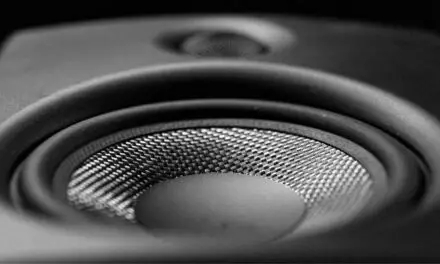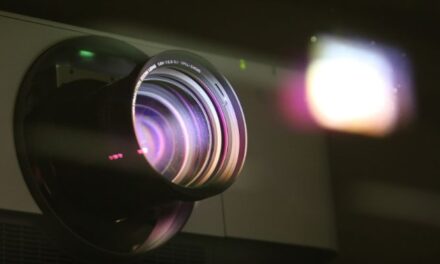Subwoofers are responsible for generating very low sound frequencies of between 20 Hz and 200 Hz in your home theater sound system.
It’s this base that brings a sense of realism to the explosions and the action scenes in our favorite movies.
However, at lower frequency ranges, a subwoofer can generate quite a lot of sonic energy and this can cause some issues if you plan to place it on a shelf.
Can A Subwoofer Be Placed On A Shelf?

You can put a subwoofer on a shelf but it is probably not going to be the most practical or best sounding place for it.
As long as your subwoofer is front-firing, there shouldn’t be too much of an issue with how it will sound on a shelf, but it may still cause the shelf to vibrate and this can cause a buzzing noise to occur.
Front-firing subs are better suited for a shelf because they put sound out directly from the speaker’s front or side.
Because of how they aim the soundwaves at the floor, down-firing subwoofers are usually too enclosed when placed on a shelf and better suited to being positioned on the floor, close to a corner, or along a flat wall.
The sound waves are then reflected back up and out from a corner creating a deeper and more rumbly sound.
This can help a cheaper sub to sound better.
However, if your sub is not particularly powerful, there won’t be much to amplify it and it may not perform very well when placed on a shelf.
People often place weaker subs on the floor in the corner of a room.
The corner then acts like an amplifier which makes your subwoofer sound more powerful than it is.
But if your sub is already good and powerful, it should still perform well on a shelf.
You Might Also Like: Can A Subwoofer Go Behind The TV? (Explained)
How To Put A Subwoofer On A Shelf
Because of the low-frequency sound a sub emits, it can cause other items on the shelf to vibrate off.
It could even cause the subwoofer itself to vibrate off the shelf or cause to shelf to vibrate off the wall.
You don’t want any of that happening so the first thing to make sure of is that the shelf is very sturdy.
The more solid the shelf is, the better the vibrations will be controlled and the less chance there will be off the shelf vibrating off the wall.
Try to place a vibration pad beneath the speaker.
It’s also worth thinking about how far the shelf is from the position where you’ll be listening to the subwoofer.
Volume drops roughly 6db every time you the double distance from the speaker.
So, if your sub is weak, to begin with, and you put it on a shelf that’s too far away from where you’ll be listening, you may render it useless.
One good thing is that bass is non-directional, so you don’t have to worry about your subwoofer being at ear level or even pointing at you.
Don’t be afraid to move your sub around on the shelf and then go back to your listening position to test how it sounds.
Depending on your room acoustics moving your sub slightly or facing it in a different direction could make a big difference and how it sounds.
Use A Quality, Low Vibration Subwoofer
High-end subs, like ones from Sonos, are designed to produce high-quality bass with much less vibration than cheaper subs.
Good subs will often incorporate additional speakers and extra ports to dampen vibration.
Sonos even has an app so you can calibrate your sub for the best sound once placed on your shelf.
Because bass sound waves travel in all directions, you can try putting a subwoofer anywhere – but it’s best to have it not too far away and generally facing your listening area.
Consider mounting your sub on a wall and try out a few different places on the floor if you can.
One trick is to place the subwoofer in the seat you’ll be listening from (at about ear level) and then crawl around the floor and position yourself around the room at places where your sub could go.
It’s easier than sitting in your chair and constantly moving your sub to different locations.
However, it achieves the same results.



